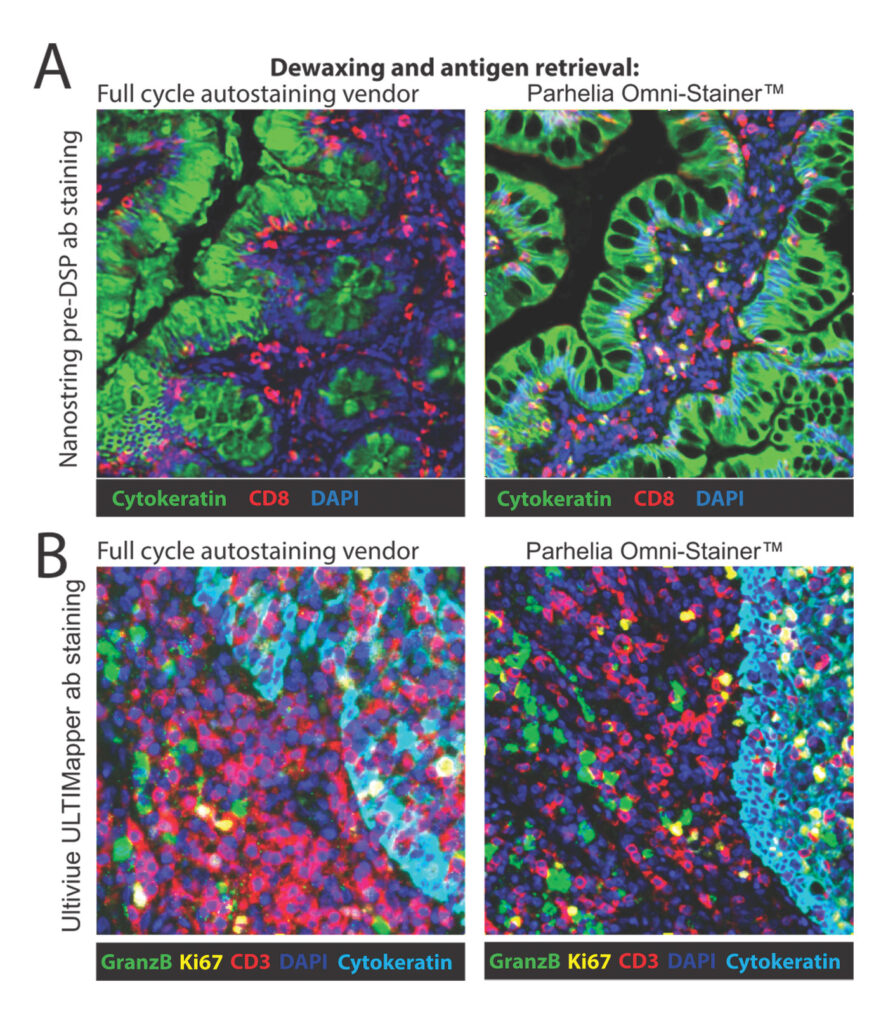Sponsored content brought to you by
Understanding cellular function within a given microenvironment is currently an expectation rather than the exception in life sciences research. Cell- and tissue-specific relationships determine health status, and molecular activity within and between individual cells offers the context necessary to understand its collective impact.
Applications of omics techniques to elucidate these relationships within native tissue environments provides spatial context to cell heterogeneity and dynamics. This provides insight into how diseases initiate, progress, and respond to (or evade) treatment, enabling genotype–phenotype mapping at both the cell and tissue levels. However, maps are only as accurate as the data used in their creation.
Employing automated methods for sample preparation can improve data consistency and reproducibility, as well as increase throughput and reduce processing time. This is particularly essential with multiplex assays, which are extremely time-consuming and open to excessive variability when performed manually. The foundational vision of Parhelia Biosciences was to provide a cost-effective solution allowing labs of all sizes to eliminate variation in multiplex assays and optimize data quality and reproducibility.
“Our system addresses the workflow in these assays, because we understand the complications and time constraints associated with advanced tissue-staining protocols,” says Nikolay Samusik, PhD, co-founder and CEO of Parhelia. “In large-scale projects, even a dedicated technician familiar with the protocols can introduce variability, which amplifies during the course of the assay.”
Parhelias’ Omni-Stainer™ is a complete automated system that includes a robotic chassis, thermal module, flow cells, software, and the company’s S12 staining module, which supports up to 12 slide-mounted samples. Staining is performed according to capillary gap exchange that ensures uniform coverage of the stained tissue, minimizes reagent waste, and simplifies subsequent displacement of the stain. Additionally, a thermal module and thermal sheath specifically designed for the modules enables sustained, precise, temperature-controlled incubation within a wide range (0–99.9°C). This Enables onboard dewaxing and antigen retrieval (Figure 1) as well as protocols with sophisticated temperature regimes like OPAL and RNAscope.

A primary goal of developing the Parhelia Omni-Stainer was affordability. The cost of automated tissue-staining systems with similar capabilities ranges from $300,000 to $500,000 (depending on the specifications and requirements to use proprietary reagents), making them unattainable for many labs. This originally motivated Samusik and his colleagues to improvise a solution using an “open-source” approach to automating sample preparation while developing CODEX (now PhenoCycler) in the Nolan Lab at Stanford University.
“Our experience demonstrated that accuracy in these assays doesn’t require paying too much for the fastest, shiniest system, which won’t automatically translate into solid data,” Samusik explains. “This drove our vision to own the spatial biology workflow by providing open-source solutions that enable labs of all sizes to streamline and standardize assay performance to ensure consistency and reproducibility.”
Exemplifying this open-source mindset, Parhelia provides access to validated assays and software capable of fine-tuning the automation for a given experiment. Samusik advises that the effectiveness of the Parhelia Omni-Stainer gradually shifted their focus from design to optimizing the assays and associated software through constant testing and validation. Side-by-side comparisons against the company’s competition consistently demonstrate that the Parhelia Omni-Stainer is capable of either comparable or better results (Figure 1)—and at a fraction of the cost.
The Parhelia Omni-Stainer offers a flexible, affordable, and customizable automated staining solution specifically designed to support multiplex protocols and deliver:
- Consistent sample preparation for accurate and reproducible results.
- An automated staining solution that costs an order of magnitude less than other systems.
- A no-code user interface for assay customization and optimization.
- A growing library of validated protocols for spatial biology and traditional staining applications.

For more information, please visit parheliabio.com.




